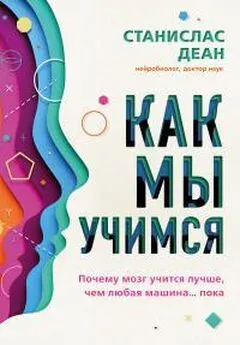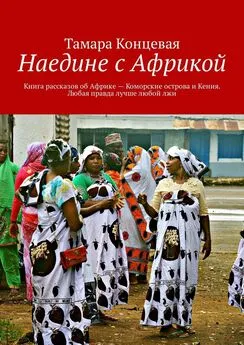Станислас Деан - Как мы учимся. Почему мозг учится лучше, чем любая машина… пока
- Название:Как мы учимся. Почему мозг учится лучше, чем любая машина… пока
- Автор:
- Жанр:
- Издательство:Эксмо
- Год:2021
- Город:Москва
- ISBN:978-5-04-113024-4
- Рейтинг:
- Избранное:Добавить в избранное
-
Отзывы:
-
Ваша оценка:
Станислас Деан - Как мы учимся. Почему мозг учится лучше, чем любая машина… пока краткое содержание
В формате PDF A4 сохранен издательский макет.
Как мы учимся. Почему мозг учится лучше, чем любая машина… пока - читать онлайн бесплатно ознакомительный отрывок
Интервал:
Закладка:
Kropff, E., & Treves, A. (2008). The emergence of grid cells: Intelligent design or just adaptation? Hippocampus , 18(12), 1256–1269.
Krubitzer, L. (2007). The magnificent compromise: Cortical field evolution in mammals. Neuron , 56(2), 201–208.
Kuhl, P. K., Tsao, F. M., & Liu, H. M. (2003). Foreign-language experience in infancy: Effects of short-term exposure and social interaction on phonetic learning. Proceedings of the National Academy of Sciences , 100(15), 9096–9101.
Kurdziel, L., Duclos, K., & Spencer, R. M. C. (2013). Sleep spindles in midday naps enhance learning in preschool children. Proceedings of the National Academy of Sciences , 110(43), 17267–17272.
Kushnir, T., Xu, F., & Wellman, H. M. (2010). Young children use statistical sampling to infer the preferences of other people. Psychological Science , 21(8), 1134–1140.
Kutas, M., & Federmeier, K. D. (2011). Thirty years and counting: Finding meaning in the N400 component of the event-related brain potential (ERP). Annual Review of Psychology, 62, 621–647.
Kutas, M., & Hillyard, S. A. (1980). Reading senseless sentences: Brain potentials reflect semantic incongruity. Science , 207(4427), 203–205.
Kutter, E. F., Bostroem, J., Elger, C. E., Mormann, F., & Nieder, A. (2018). Single neurons in the human brain encode numbers. Neuron , 100(3), 753–761.
Kwan, K. Y., Lam, M. M. S., Johnson, M. B., Dube, U., Shim, S., Rašin, M.-R., Šestan, N. (2012). Species-dependent posttranscriptional regulation of NOS1 by FMRP in the developing cerebral cortex. Cell , 149(4), 899–911.
Lake, B. M., Salakhutdinov, R., & Tenenbaum, J. B. (2015). Human-level concept learning through probabilistic program induction. Science , 350(6266), 1332–1338.
Lake, B. M., Ullman, T. D., Tenenbaum, J. B., & Gershman, S. J. (2017). Building machines that learn and think like people. Behavioral and Brain Sciences , 40, e253.
Landau, B., Gleitman, H., & Spelke, E. (1981). Spatial knowledge and geometric representation in a child blind from birth. Science , 213(4513), 1275–1278.
Lane, C., Kanjlia, S., Omaki, A., & Bedny, M. (2015). «Visual» cortex of congenitally blind adults responds to syntactic movement. Journal of Neuroscience , 35(37), 12859–12868.
Langston, R. F., Ainge, J. A., Couey, J. J., Canto, C. B., Bjerknes, T. L., Witter, M. P., … Moser, M.-B. (2010). Development of the spatial representation system in the rat. Science , 328(5985), 1576–1580.
LeCun, Y., Bengio, Y., & Hinton, G. (2015). Deep learning. Nature , 521(7553), 436–444.
LeCun, Y., Bottou, L., Bengio, Y., & Haffner, P. (1998). Gradient-based learning applied to document recognition. Proceedings of the IEEE , 86(11), 2278–2324.
Lefevre, J., & Mangin, J.-F. (2010). A reaction-diffusion model of human brain development. PLOS Computational Biology, 6(4), e1000749.
Leong, Y. C., Radulescu, A., Daniel, R., DeWoskin, V., & Niv, Y. (2017). Dynamic interaction between reinforcement learning and attention in multidimensional environments. Neuron , 93(2), 451–463.
Leppanen, P. H., Richardson, U., Pihko, E., Eklund, K. M., Guttorm, T. K., Aro, M., & Lyytinen, H. (2002). Brain responses to changes in speech sound durations differ between infants with and without familial risk for dyslexia. Developmental Neuropsychology , 22(1), 407–422.
Lerner, Y., Honey, C. J., Silbert, L. J., & Hasson, U. (2011). Topographic mapping of a hierarchy of temporal receptive windows using a narrated story. Journal of Neuroscience , 31(8), 2906–2915.
Leroy, F., Cai, Q., Bogart, S. L., Dubois, J., Coulon, O., Monzalvo, K., Dehaene-Lambertz, G. (2015). New human-specific brain landmark: The depth asymmetry of superior temporal sulcus. Proceedings of the National Academy of Sciences , 112(4), 1208–1213.
Li, P., Legault, J., & Litcofsky, K. A. (2014). Neuroplasticity as a function of second language learning: Anatomical changes in the human brain. Cortex , 58, 301–324.
Li, S., Lee, K., Zhao, J., Yang, Z., He, S., & Weng, X. (2013). Neural competition as a developmental process: Early hemispheric specialization for word processing delays specialization for face processing. Neuropsychologia , 51(5), 950–959.
Lillard, A., & Else-Quest, N. (2006). Evaluating Montessori education. Science , 313(5795), 1893–1894.
Lindsey, R. V., Shroyer, J. D., Pashler, H., & Mozer, M. C. (2014). Improving students’ long-term knowledge retention through personalized review. Psychological Science , 25(3), 639–647.
Lisman, J., Buzsáki, G., Eichenbaum, H., Nadel, L., Ranganath, C., & Redish, A. D. (2017). Viewpoints: How the hippocampus contributes to memory, navigation and cognition. Nature Neuroscience, 20(11), 1434–1447.
Liu, S., Ullman, T. D., Tenenbaum, J. B., & Spelke, E. S. (2017). Ten-month-old infants infer the value of goals from the costs of actions. Science , 358(6366), 1038–1041.
Livingstone, M. S., Vincent, J. L., Arcaro, M. J., Srihasam, K., Schade, P. F., & Savage, T. (2017). Development of the macaque face-patch system. Nature Communications , 8, 14897.
Loewenstein, G. (1994). The psychology of curiosity: A review and reinterpretation. Psychological Bulletin , 116(1), 75–98.
Lømo, T. (2018). Discovering long-term potentiation (LTP) – recollections and reflections on what came after. Acta Physiologica , 222(2), e12921.
Louie, K., & Wilson, M. A. (2001). Temporally structured replay of awake hippocampal ensemble activity during rapid eye movement sleep. Neuron , 29(1), 145–156.
Lyons, I. M., & Beilock, S. L. (2012). When math hurts: Math anxiety predicts pain network activation in anticipation of doing math. PLOS ONE , 7(10), e48076.
Lyons, K. E., & Ghetti, S. (2011). The development of uncertainty monitoring in early childhood. Child Development , 82(6), 1778–1787.
Lyytinen, H., Ahonen, T., Eklund, K., Guttorm, T., Kulju, P., Laakso, M. L., … Viholainen, H. (2004). Early development of children at familial risk for dyslexia – follow-up from birth to school age. Dyslexia , 10(3), 146–178.
Ma, L., & Xu, F. (2013). Preverbal infants infer intentional agents from the perception of regularity. Developmental Psychology , 49(7), 1330–1337.
Mack, A., & Rock, I. (1998). Inattentional blindness . Cambridge, MA: MIT Press.
Maguire, E. A., Gadian, D. G., Johnsrude, I. S., Good, C. D., Ashburner, J., Frackowiak, R. S., & Frith, C. D. (2000). Navigation-related structural change in the hippocampi of taxi drivers. Proceedings of the National Academy of Sciences, 97(8), 4398–4403.
Maguire, E. A., Spiers, H. J., Good, C. D., Hartley, T., Frackowiak, R. S., & Burgess, N. (2003). Navigation expertise and the human hippocampus: A structural brain imaging analysis. Hippocampus , 13(2), 250–259.
Mahmoudzadeh, M., Dehaene-Lambertz, G., Fournier, M., Kongolo, G., Goudjil, S., Dubois, J., Wallois, F. (2013). Syllabic discrimination in premature human infants prior to complete formation of cortical layers. Proceedings of the National Academy of Sciences , 110(12), 4846–4851.
Mahon, B. Z., Anzellotti, S., Schwarzbach, J., Zampini, M., & Caramazza, A. (2009). Category-specific organization in the human brain does not require visual experience. Neuron , 63(3), 397–405.
Maloney, E. A., & Beilock, S. L. (2012). Math anxiety: Who has it, why it develops, and how to guard against it. Trends in Cognitive Sciences , 16(8), 404–406.
Markman, E. M., & Wachtel, G. F. (1988). Children’s use of mutual exclusivity to constrain the meanings of words. Cognitive Psychology , 20(2), 121–157.
Markman, E. M., Wasow, J. L., & Hansen, M. B. (2003). Use of the mutual exclusivity assumption by young word learners. Cognitive Psychology , 47(3), 241–275.
Marois, R., & Ivanoff, J. (2005). Capacity limits of information processing in the brain. Trends in Cognitive Sciences , 9(6), 296–305.
Marques, J. F., & Dehaene, S. (2004). Developing intuition for prices in euros: Rescaling or relearning prices? Journal of Experimental Psychology: Applied , 10(3), 148–155.
Marshall, C. (2017). Montessori education: A review of the evidence base. npj Science of Learning , 2(1), 11.
Marshall, L., Helgadóttir, H., Mölle, M., & Born, J. (2006). Boosting slow oscillations during sleep potentiates memory. Nature , 444(7119), 610–613.
Marti, S., King, J.-R., & Dehaene, S. (2015). Time-resolved decoding of two processing chains during dual-task interference. Neuron , 88(6), 1297–1307.
Marti, S., Sigman, M., & Dehaene, S. (2012). A shared cortical bottleneck underlying attentional blink and psychological refractory period. NeuroImage , 59(3), 2883–2898.
Martin, S. L., Ramey, C. T., & Ramey, S. (1990). The prevention of intellectual impairment in children of impoverished families: Findings of a randomized trial of educational day care. American Journal of Public Health , 80(7), 844–847.
Maye, J., Werker, J. F., & Gerken, L. (2002). Infant sensitivity to distributional information can affect phonetic discrimination. Cognition , 82(3), B101–B111.
Mayer, R. E. (2004). Should there be a three-strikes rule against pure discovery learning? The case for guided methods of instruction. American Psychologist , 59(1), 14–19.
McCandliss, B. D., Fiez, J. A., Protopapas, A., Conway, M., & McClelland, J. L. (2002). Success and failure in teaching the [r]-[l] contrast to Japanese adults: Tests of a Hebbian model of plasticity and stabilization in spoken language perception. Cognitive, Affective, and Behavioral Neuroscience, 2(2), 89–108.
McCloskey, M., & Rapp, B. (2000). A visually based developmental reading deficit. Journal of Memory and Language , 43(2), 157–181.
McCrink, K., & Wynn, K. (2004). Large-number addition and subtraction by 9-month-old infants. Psychological Science , 15(11), 776–781.
Mehler, J., Jusczyk, P., Lambertz, G., Halsted, N., Bertoncini, J., & Amiel-Tison, C. (1988). A precursor of language acquisition in young infants. Cognition , 29(2), 143–178.
Meyer, T., and Olson, C. R. (2011). Statistical learning of visual transitions in monkey inferotemporal cortex. Proceedings of the National Academy of Sciences , 108(48), 19401–19406.
Meyniel, F., & Dehaene, S. (2017). Brain networks for confidence weighting and hierarchical inference during probabilistic learning. Proceedings of the National Academy of Sciences , 114(19), E3859–E3868.
Millum, J., & Emanuel, E. J. (2007). The ethics of international research with abandoned children. Science , 318(5858), 1874–1875.
Mnih, V., Kavukcuoglu, K., Silve , D., Rusu, A. A., Veness, J., Bellemare, M. G., … Hassabis, D. (2015). Human-level control through deep reinforcement learning. Nature , 518(7540), 529–533.
Mongelli, V., Dehaene, S., Vinckier, F., Peretz, I., Bartolomeo, P., & Cohen, L. (2017). Music and words in the visual cortex: The impact of musical expertise. Cortex , 86, 260–274.
Mongillo, G., Barak, O , & Tsodyks, M. (2008). Synaptic theory of working memory. Science , 319(5869), 1543–1546.
Monzalvo, K., Fluss, J., Billard, C., Dehaene, S., & Dehaene-Lambertz, G. (2012). Cortical networks for vision and language in dyslexic and normal children of variable socio-economic status. NeuroImage , 61(1), 258–274.
Читать дальшеИнтервал:
Закладка:





![Кэролайн Уилльямс - Мой продуктивный мозг [Как я проверила на себе лучшие методики саморазвития и что из этого вышло]](/books/1096012/kerolajn-uillyams-moj-produktivnyj-mozg-kak-ya-pro.webp)




